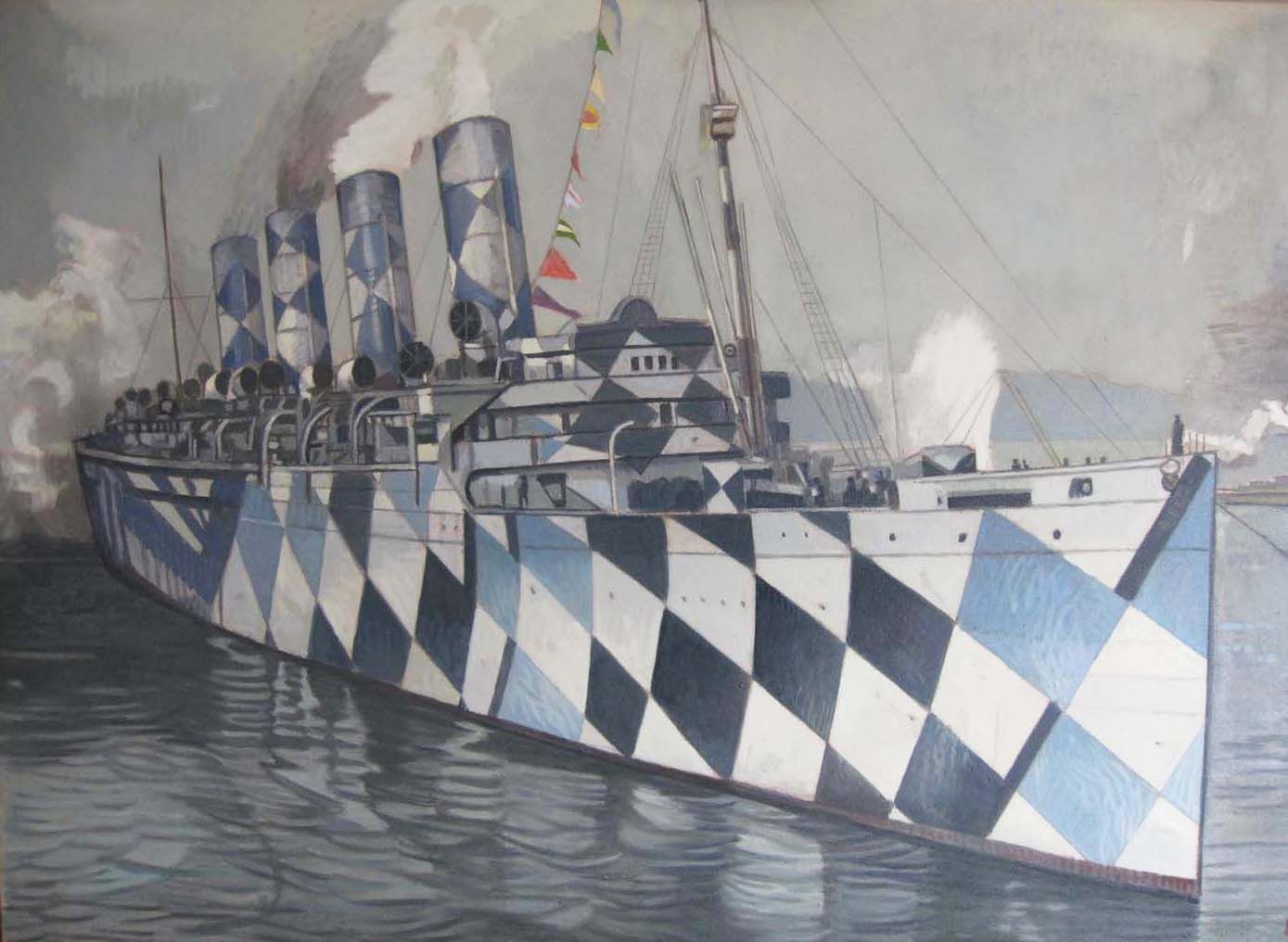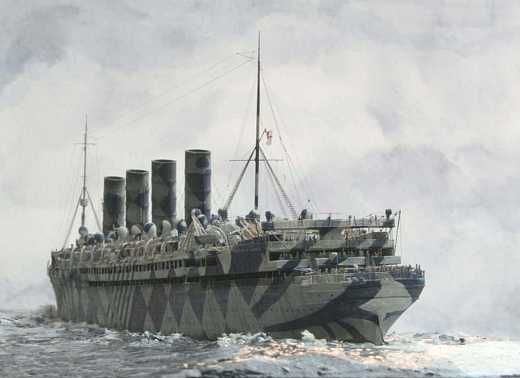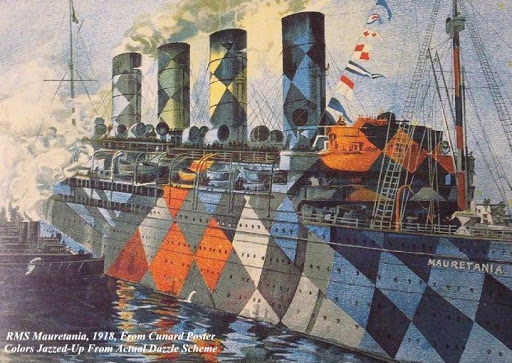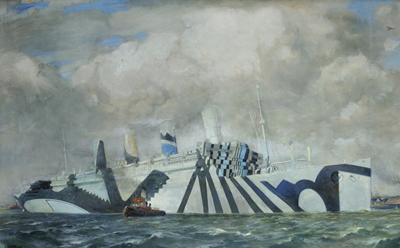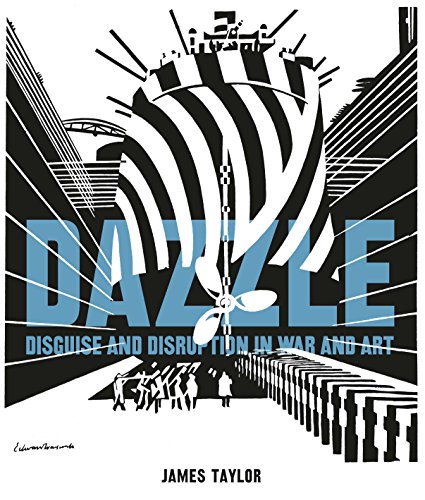Overview
While it is a constant throughout history that conflict has inspired and engendered great art, it is a much rarer event for art to impact directly upon the vicissitudes of war. Yet, in the course of the First World War, a collision of naval strategy and the nascent modern art movement, led to some two thousand British ships going to sea as the largest painted modernist “canvases” in the world covered in abstract, clashing, decorative, and geometric designs in a myriad of colors. Dazzle camouflage had arrived.Heavily inspired by the Cubism and British Vorticism art movements, dazzle was conceived and developed by celebrated artist and then naval commander Norman Wilkinson. Dazzle camouflage rejects concealment in favor of disruption. It seeks to break up a ship’s silhouette with brightly contrasting geometric designs to make a vessel’s speed and direction incredible difficult to discern. False painted bow-waves and sterns were used to confuse and throw off the deadly U-boat captains. The high contrast shapes and colors further made it very difficult to match up a ship in the two halves of an optical naval rangefinder. This new book traces the development of the dazzle aesthetic from theory into practice and beyond.
Editorial Reviews
“James Taylor’s [book] is the colorfully illustrated story of Wilkinson’s invention of a camouflage scheme for ships during World War One that was intended to confuse the submarine officers who needed to know a target’s location and course before firing torpedoes; it was an ingenious creation, echoed today in modern art and clothing.” —The Red Crew
“Those who regard dazzle more as an art form may well find this an interesting read.” —Warship, as part of the publication’s Naval Books of the Year“… A wealth of visual material within quite a slim volume in a way that complements the text so well.” —The International Journal of Maritime History“The color illustrations–mostly early 20th Century paintings–will enamor sailors, historians, artists, designers and anyone else dazzled by design (popularized as Op Art in the 1960s).” —Military Times
- Format:
Hardcover- Pages:
128pages
- Published:
September 15, 2016- ISBN-10:
1591146364- ISBN-13:
9781591146360- Product Dimensions:
9.5 × 8 × 1 in- Product Weight:
5 oz
Follow our regular channel at Spotterup on YouTube
Follow our WEBSITE
Follow on Instagram
Visit our STORE
*The views and opinions expressed on this website are solely those of the original authors and contributors. These views and opinions do not necessarily represent those of Spotter Up Magazine, the administrative staff, and/or any/all contributors to this site.

